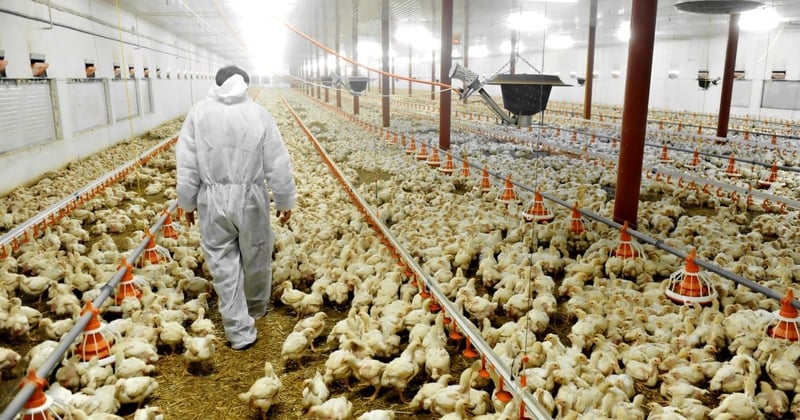
When Millions of Farmed Animals Are at Risk in Emergencies, Suffocation and Suffering are Likely
Blog
As African Swine Fever (ASF) outbreaks decimated pig farms around the world last year, World Animal Protection released a statement urging governments to address inhumane methods for killing large numbers of pigs, including several cases of burning or burying pigs alive.
ASF may not have come to the United States, but the killing of large numbers of farmed animals is once again occurring here amid other emergencies. Two common culling methods allowed by our government and industry groups—ventilation shut down (VSD) and water-based foam—can be similarly horrific.
Amid the ongoing coronavirus outbreak, worker health and safety issues have now disrupted the meat supply chain, and farmed animals are suffering. Lack of staff available to process chickens at a Delmarva Poultry Industry plant led to the emergency killing of roughly two million birds.
Additionally, zoonotic disease outbreaks are increasingly commonplace in the intensive confinement model of farmed animal production, with confinement, crowding, and poor genetics contributing to the evolution of more virulent diseases and their rapid spread to potentially billions of animals. An outbreak of avian flu in the US and Canada in 2014-2015 led to the emergency killing of roughly 48 million birds. Already this month, 300,000 turkeys were killed in South Carolina in an effort to control a highly pathogenic avian flu strain.
While information has not been made public about how the birds in these cases were killed, the American Veterinary Medical Association provides guidelines to producers for acceptable methods of “depopulation”—a seemingly innocuous term for the killing of large numbers of animals to prevent or manage a disaster. These guidelines include VSD and water-based foam, both of which have been used in the US previously and can cause extreme animal suffering.
- Water-based foam: Water-based foam is a recommended method for poultry species in cage-free indoor systems. It was developed by adapting a foam previously used in firefighting. The foam obstructs the animal’s airway, which is extremely stressful and similar to drowning or suffocation. Research on the efficacy and welfare implications of water-based foam is limited, though one study documented a time to death of more than 10 minutes for ducks. The World Organisation for Animal Health (OIE), conversely, does not condone water-based foam for euthanasia, even in emergency disease control.
- Ventilation shutdown: VSD involves sealing a barn (that doesn’t usually have any natural ventilation), shutting off airflow, and turning off the fans and sometimes adding additional heaters. This kills the animals by a combination of excessive temperature, CO2, or toxic gases emitted by the manure below the flooring. It requires ideal circumstances and facility design to be effective, though at best will take 40 mins for chickens to reach minimum required temperatures that must then be maintained for three hours to ensure death. However, circumstances are rarely ideal, and numerous variables may affect the time to death of 100% of animals in the barn. A case study from the UK showed that 100% mortality was not achieved even after 16 hours, meaning the pigs on that farm were suffocating and suffering for close to a full day.
It is a challenging issue. Understanding when and how to humanely end an animal’s life is complicated. But as with other attributes of the intensive farmed animal industry, this issue is made more extreme and egregious by the scale and conditions of the system.
For example, several methods are recommended ahead of VSD for pigs by the AVMA, such as a captive bolt and electric stunning, both of which are supported by OIE and World Animal Protection. However, the practicality of preferred techniques “decrease when time is a factor, and the number of swine to be depopulated increases.” Of course, in a disaster or an emergency, time is usually a factor. And with the extreme size of farms today, in which thousands of animals may be confined together, it calls into question whether the industry could ever capably and humanely respond to an emergency.
It is time for the AVMA to stop condoning these cruel methods and for the US government to implement measures to prevent farmers from utilizing them.
For our part, reducing our overall demand for meat can reduce animal suffering through inhumane depopulation measures. A food system based on diversified family farms growing mostly plants, with animals housed in smaller numbers with more space to exhibit natural behaviors, would be more resilient to supply chain shocks. Disease outbreaks and other disruptions may still occur, but humane disease management or culling strategies would be feasible. Fewer animals would be impacted by single disasters, and farmers could better adapt to risk.